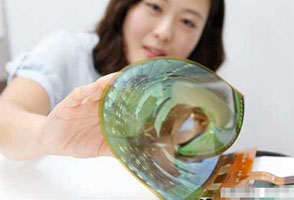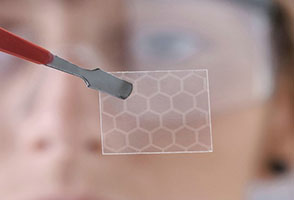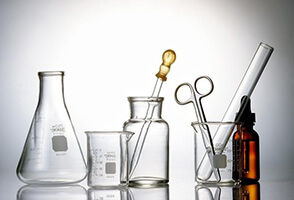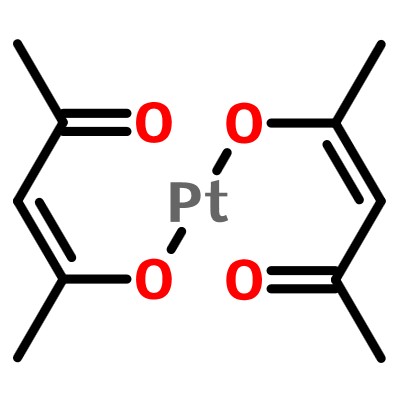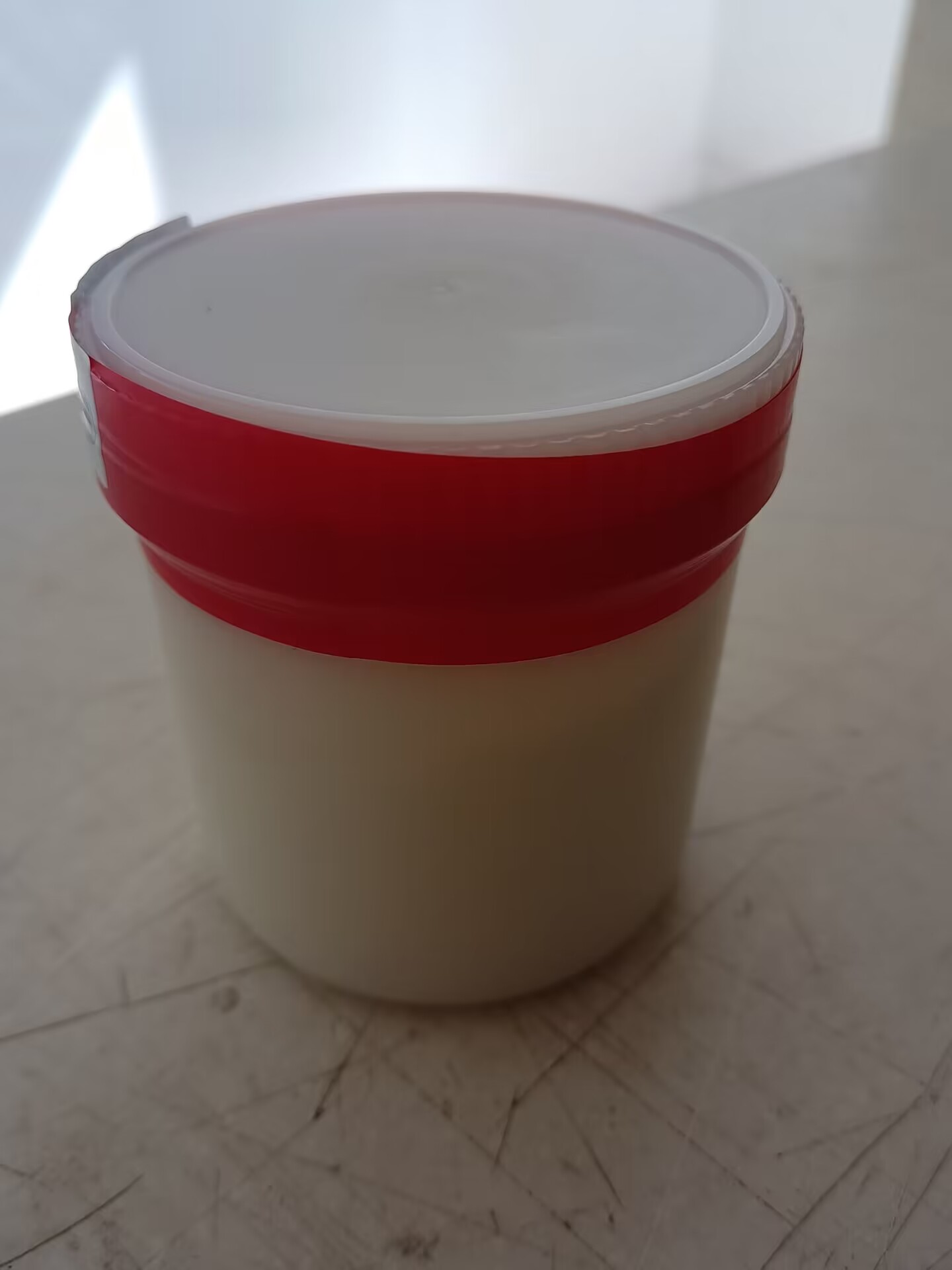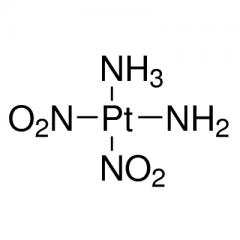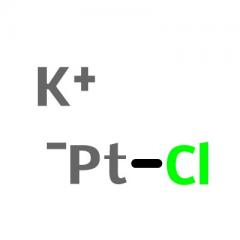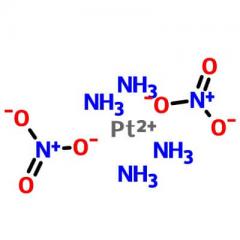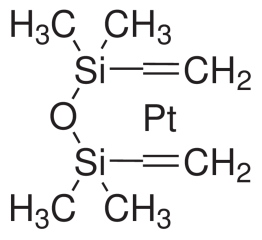| Identification | ||
| Name |
|
Platinum bis(acetylacetonate) |
| Synonyms |
|
Platinum(II)-2,4-pentanedionate 2,4-Pentanedione platinum(II) derivative, Pt(acac)2 4-pentanedionato-o,o’)-bis((sp-4-1)-platinu Bis(pentane-2,4-dionato-O,O')platinum Platinum(II) acetylacetonate |
|
|
||
| Molecular Structure |
|
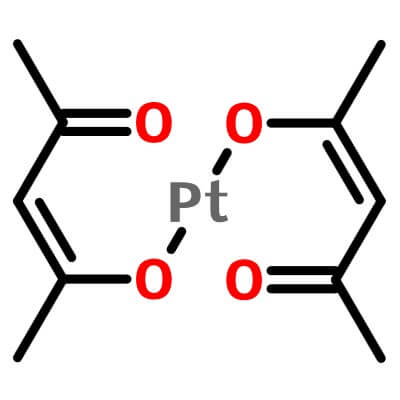 |
|
|
||
| Molecular Formula |
|
C10H14O4Pt |
| Molecular Weight |
|
393.30 |
| CAS Registry Number |
|
15170-57-7 |
| EINECS |
|
239-223-5 |
| Properties | ||
| Melting point |
|
250-252 ºC |
| Sublimation |
|
170 ºC |
| Water solubility |
|
insoluble |
| Purity |
|
> 99.95% |
| Model Number |
|
Analytical pure |
| Platinum content |
|
49.6%up |
| Appearance |
|
Yellow to yellow-green powder |
| Safety Data | ||
| Hazard Symbols |
|
Xn |
| Risk Codes |
|
R20/21/22;R36/37/38 |
| Safety Description |
|
S26;S36/37/39 |
Platinum bis(acetylacetonate) uses:
(1) With Pt(acac)2 as the precursor, coatings and thin films are prepared on the surface of Mo, Re, W, titanium cathode, and silicon by the chemical vapor deposition (CVD) method.
(2) Heating Fe(CO)5 and Pt(acac)2 to prepare Fe/Pt alloy nanoparticles, which can be used for magnetic storage.
(3) Pt(acac)2 precursor CVD method is used to prepare the catalytic electrode of electric vehicle fuel cell.
(4) Pt(acac)2 is used as the precursor to prepare highly dispersed carrier catalysts such as PGMs/A12O3, PGMs/TiO2, PGMs/SiO2, etc., which can be used as catalysts for homogeneous and heterogeneous hydrogenation and dehalogenation reactions.
(5) The light used as the sensor imitates the catalyst of carbosiloxane.
(6) I2 addition reaction catalyst.
The precursor of nanomaterials. MOCVD precursor compound, homogeneous catalyst.

